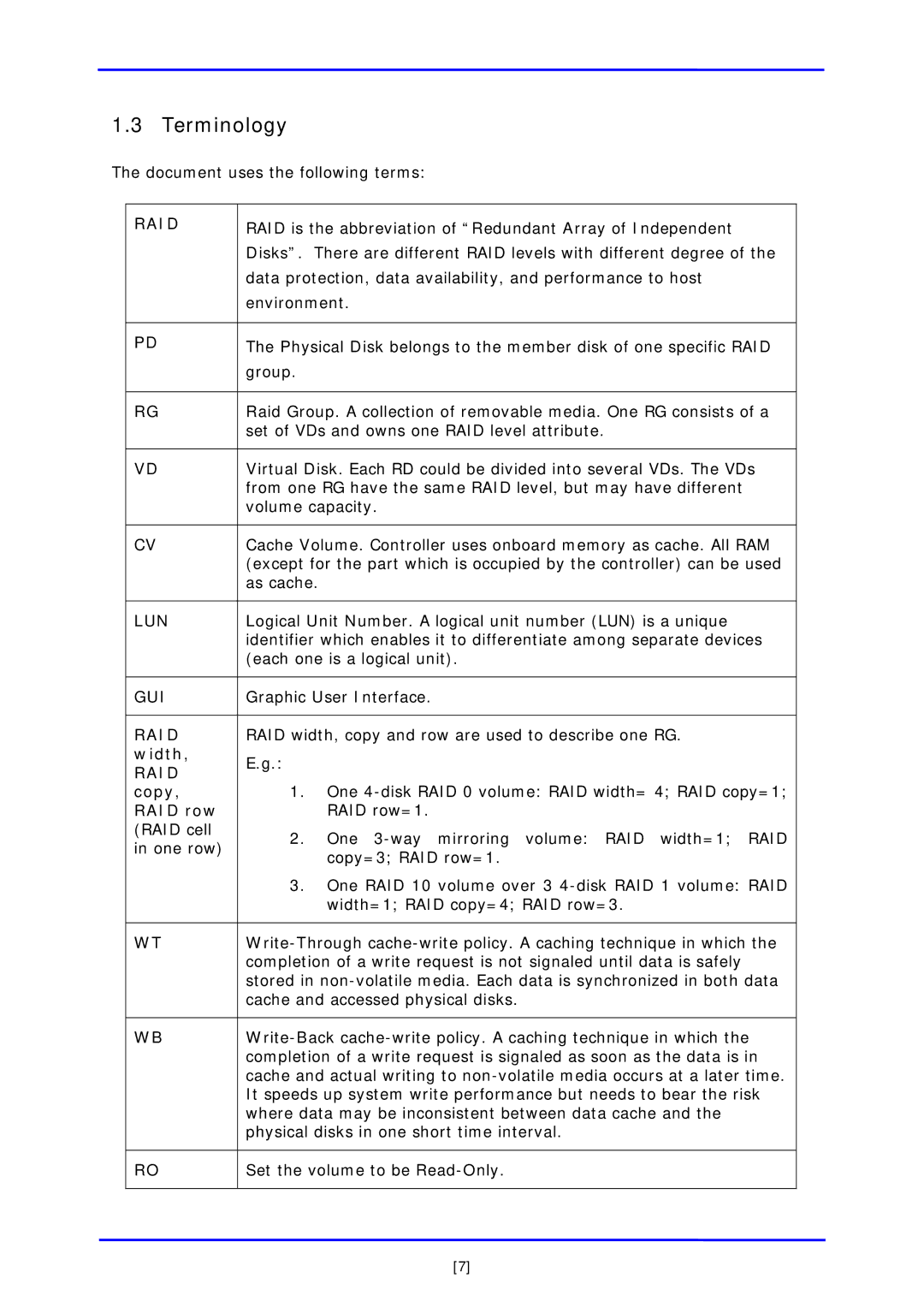
1.3 Terminology
The document uses the following terms:
RAID | RAID is the abbreviation of “Redundant Array of Independent | |
| Disks”. There are different RAID levels with different degree of the | |
| data protection, data availability, and performance to host | |
| environment. | |
|
| |
PD | The Physical Disk belongs to the member disk of one specific RAID | |
| group. | |
|
| |
RG | Raid Group. A collection of removable media. One RG consists of a | |
| set of VDs and owns one RAID level attribute. | |
|
| |
VD | Virtual Disk. Each RD could be divided into several VDs. The VDs | |
| from one RG have the same RAID level, but may have different | |
| volume capacity. | |
|
| |
CV | Cache Volume. Controller uses onboard memory as cache. All RAM | |
| (except for the part which is occupied by the controller) can be used | |
| as cache. | |
|
| |
LUN | Logical Unit Number. A logical unit number (LUN) is a unique | |
| identifier which enables it to differentiate among separate devices | |
| (each one is a logical unit). | |
|
| |
GUI | Graphic User Interface. | |
|
| |
RAID | RAID width, copy and row are used to describe one RG. | |
width, | E.g.: | |
RAID | ||
1. One | ||
copy, | ||
RAID row | RAID row=1. | |
(RAID cell | 2. One | |
in one row) | ||
copy=3; RAID row=1. | ||
| ||
| 3. One RAID 10 volume over 3 | |
| width=1; RAID copy=4; RAID row=3. | |
|
| |
WT | ||
| completion of a write request is not signaled until data is safely | |
| stored in | |
| cache and accessed physical disks. | |
|
| |
WB | ||
| completion of a write request is signaled as soon as the data is in | |
| cache and actual writing to | |
| It speeds up system write performance but needs to bear the risk | |
| where data may be inconsistent between data cache and the | |
| physical disks in one short time interval. | |
|
| |
RO | Set the volume to be | |
|
|
[7]
